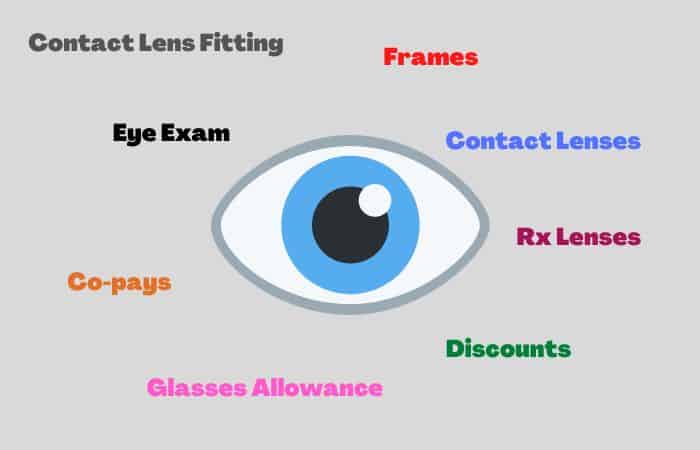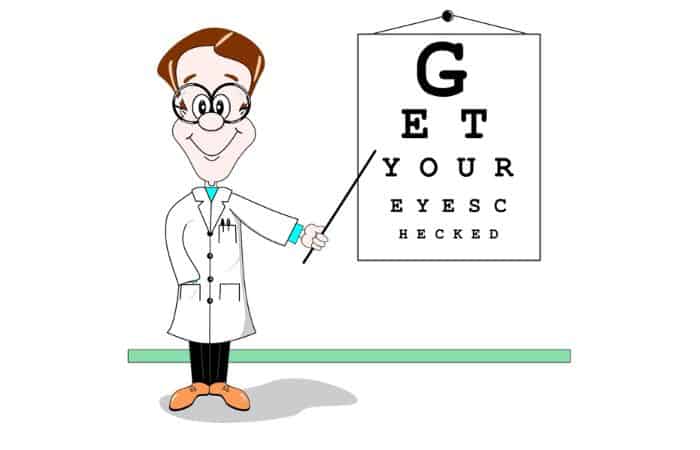If you have vision insurance, congratulations! You’ve taken an important step in protecting your eye health. But are you getting the most out of your coverage? If you haven’t peeked at your policy yet, now’s the time to do so. Here are a few tips for getting the most out of your vision insurance benefits.
(This page contains affiliate links. OGR may receive compensation if you click a link and make a purchase.)
Know Your Plan Benefits

First and foremost, it’s important to know what your plan covers. Some plans cover more than others, so it’s important to be aware of the details of your particular policy.
If you’re not sure what your policy covers, contact your insurance company or HR department and ask. They should be able to give you a rundown of what’s included in your plan.
Most vision insurance plans will cover at least a portion of the cost of an annual eye exam. Before you make an appointment, you’ll want to know whether your plan covers a percentage of the cost (100%, 80%, etc.) or if you’re responsible for a set copay amount.
Many plans also offer coverage for prescription glasses or contact lenses. Some plans even provide discounts on laser vision correction surgery, such as LASIK.
If you have a health insurance plan that includes vision benefits, you may be wondering if you need to purchase a separate vision insurance policy. In most cases, health insurance that offers vision benefits usually covers a comprehensive eye exam for eye health, but not a refractive exam for glasses or contacts.
Understand When Your Coverage Calendar Begins and Ends

This one is important! Insurance companies often have a calendar year for benefits. The benefit year usually resets each January, but sometimes it may run from when you start coverage, for example, if you start a new job in the middle of the year.
You can even score yourself a “double dip” of benefits if you time it right. For example, let’s say you start a new job in the fall and now have vision insurance. If you have an annual eye exam and purchase a new pair of prescription glasses in December, you can get a second pair of prescription glasses with your benefits come January.
(Or, if you also wear contact lenses, you can use your allowance towards contacts in December and get yourself a new pair of prescription glasses in January.)
Find An In-Network Provider

When it comes to vision insurance, it pays (literally) to see an in-network provider. In-network providers have agreed to accept a lower rate for services from the insurance company, which means you’ll pay less out of pocket.
If you’re not sure if a particular provider is in your network, give them a call and ask. You can also check your insurance company’s website or give them a call to get a list of in-network providers in your area.
Keep in mind that you usually have the freedom to see any vision care provider you want, but you’ll likely pay more out of pocket if you choose an out-of-network provider.
Use Your Preventive Care Benefits

Most vision insurance plans offer some sort of preventive care benefit, which typically covers a portion (or even all) of the cost of an annual eye exam. These exams are important for catching vision problems early, so be sure to take advantage of this benefit.
If you have children, they may also be covered for an annual eye exam under your plan. Some plans even offer coverage for vision screenings for children as young as six months old.
In addition to an annual eye exam, your plan may also cover other preventive care measures, such as glaucoma screenings. These are important for detecting vision problems early, so be sure to ask your doctor if you’re due for any preventive care services.
Keep Your Receipts (And Get Them Itemized)

If you do have to pay out of pocket for vision services, be sure to hold onto your receipts. Some plans will reimburse you for a portion of your out-of-pocket costs, but you’ll need to submit a claim form with your receipts to get reimbursed.
When you see the doctor, be sure to ask for an itemized receipt that details all the services and products such as lenses and treatments you purchased. For example, if you had an annual eye exam and also purchased a pair of prescription glasses, your itemized receipt would list out the cost of the exam as well as the frames, lenses, and any other add-ons such as anti-reflective coating.
If your insurance company offers a flexible spending account (FSA) or health savings account (HSA), you can use pre-tax money from these accounts to pay for eligible vision care expenses. Prescription glasses/sunglasses, contact lenses, and contact lens solutions are all FSA/HSA-eligible.
Crunch The Numbers On the Glasses/Contacts Allowance

If your plan offers a glasses or contacts allowance, it’s important to understand how it works. This allowance is typically a set amount that the insurance company will contribute towards the cost of prescription glasses OR contacts.
For example, if your allowance is $200 and you purchase a pair of glasses that costs $250, you’ll be responsible for paying the remaining $50. Some plans will cover the full cost of your glasses or contacts up to a certain amount, while others will require you to pay a portion of the costs.
Depending on your plan, you’ll sometimes get a percentage discount off the remaining balance. Many plans offer a 20% discount for the cost over the covered amount, which would bring your out-of-pocket costs down to $40 in the above example.
It’s also important to note that this allowance is usually per year, so if you don’t use it all in one year, you’ll lose it. And if you wear contacts, it’s generally an either-or allowance: you can use it towards glasses or contacts, not both.
Use Your Benefits Online (And Shop Around)

Lastly, you don’t have to shop at a brick-and-mortar optical store to use your vision benefits. Many insurance companies are in-network with online retailers that offer vision care products and services.
One of the advantages of shopping online is that you can easily compare pricing and features side-by-side. And since most online retailers offer free shipping and returns, you can try out your glasses in the comfort of your own home before making a decision.
Another advantage of shopping online is you can usually get better pricing on everything from designer frames to lens treatments compared to retail optical stores.
Many online opticals include treatments such as anti-reflective, UV-coating, and anti-scratch coating in the cost of the lenses, which are normally extra. So even if you have a plan that covers lens treatments, you may be able to get a better deal by shopping online.